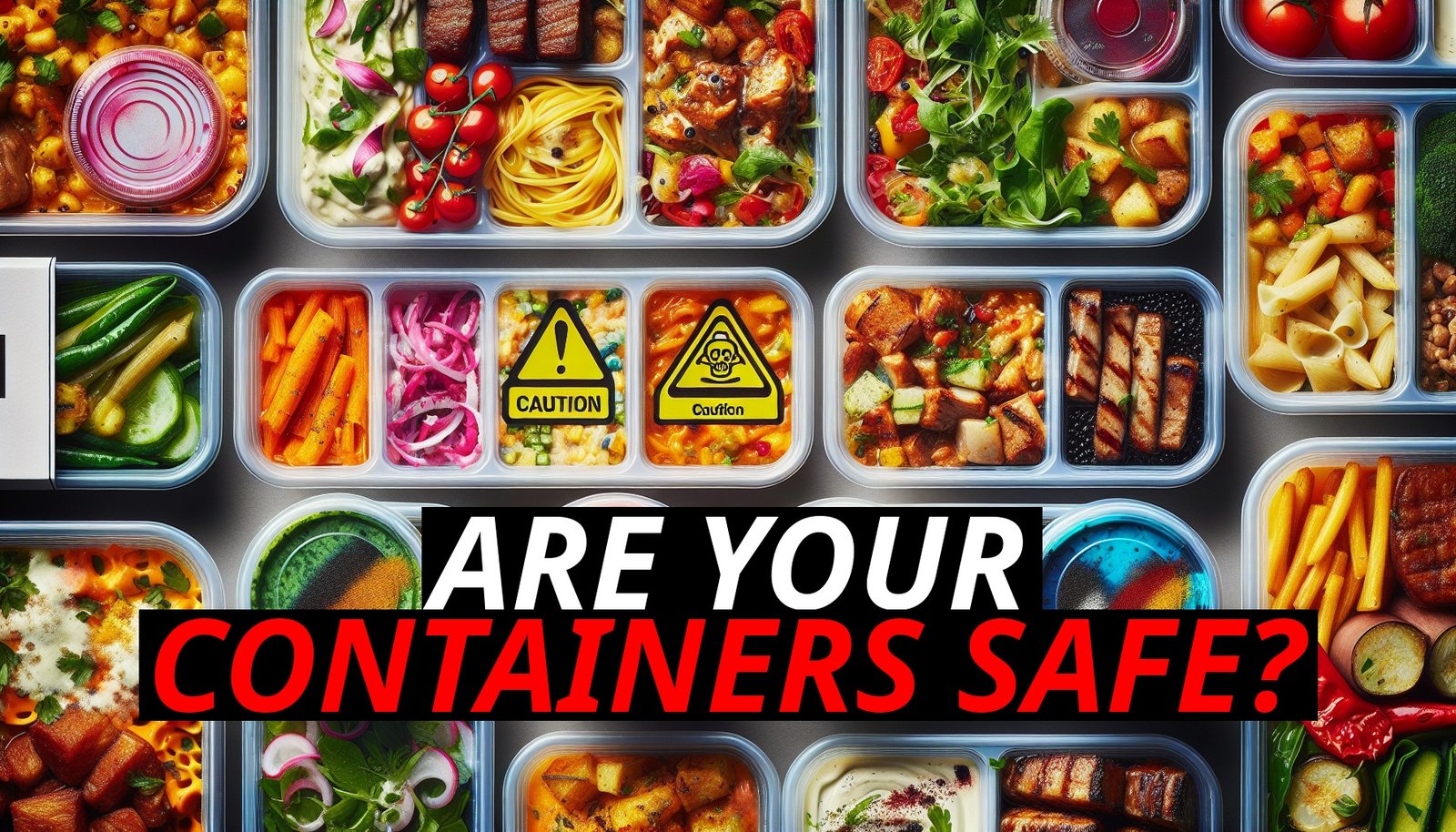Is Your Meal Prep Helping You Stay Healthy—Or Putting You At Risk?
You’ve got your routine down to a science. Every Sunday, you prep your meals for the week, carefully portioning out servings into neat rows of containers. You know exactly what you’re eating, how much you’re eating, and you feel good about staying on track with your health goals. But what if those perfectly organized food containers are doing more harm than good?
It turns out that the very containers you trust to keep your meals fresh might be leaching harmful chemicals into your food. It’s a disturbing thought, but one that’s worth exploring. Let’s take a closer look at the safety of common food containers used in meal prep, the risks of plastic, and the benefits of choosing safer alternatives.
The Hidden Risks Of Plastic Food Containers
Plastic food containers are everywhere—they’re lightweight, affordable, and convenient. But what many people don’t realize is that these everyday items can contain chemicals that may leach into your food, especially when exposed to heat. These chemicals include Bisphenol A (BPA), Bisphenol S (BPS), Bisphenol F (BPF), and phthalates, all of which have been linked to potential health risks.
– BPA and Its Replacements: BPA has been used in plastics for decades, but concerns about its potential to disrupt hormones led to the rise of BPA-free products. However, as discussed in previous articles, BPA-free doesn’t necessarily mean safe. Replacements like BPS and BPF can still pose similar risks, including hormone disruption, reproductive issues, and increased cancer risk.
– Phthalates: These chemicals are often used to make plastics more flexible, but they are not chemically bound to the plastic, meaning they can easily leach into food. Phthalates have been associated with a variety of health problems, including hormone disruption, developmental issues in children, and fertility problems.
– Heat and Leaching: The process of leaching is exacerbated by heat. When you microwave food in plastic containers or wash them in the dishwasher, the heat can cause these chemicals to leach out more readily, contaminating your food with substances that can harm your health over time.
Why Your Meal Prep Routine Deserves A Second Look
The idea of harmful chemicals leaching into your food might sound alarming, but it’s an important issue to consider—especially if you rely heavily on plastic containers for meal prep. The risks are particularly concerning for those who heat their food in plastic containers, as this can significantly increase the potential for chemical leaching.
So, what can you do to protect yourself and ensure that your healthy meal prep routine isn’t compromised by toxic chemicals? The answer lies in choosing safer alternatives and making a few simple changes to your routine.
Safer Alternatives: What To Use Instead Of Plastic
Fortunately, there are plenty of safer alternatives to plastic food containers that can help you avoid exposure to harmful chemicals. Here are some of the best options:
– Glass Containers: Glass is a durable and non-reactive material that doesn’t leach chemicals into your food, even when heated. It’s an excellent choice for meal prep because it’s microwave-safe, dishwasher-safe, and doesn’t absorb odors or stains. Plus, glass containers are often available with airtight lids, making them perfect for keeping your meals fresh.
– Stainless Steel Containers: Stainless steel is another great option for meal prep. It’s lightweight, durable, and doesn’t leach harmful chemicals. Stainless steel containers are especially useful for storing dry or cold foods, and many come with secure, leak-proof lids.
– Food-Grade Silicone Bags and Containers: Silicone is a flexible, heat-resistant material that’s ideal for storing a variety of foods. Look for food-grade silicone products that are free from BPA, BPS, and phthalates. Silicone bags are particularly popular for meal prep, as they can be used to store everything from snacks to full meals, and they’re easy to clean and reuse.
– Ceramic or Porcelain Dishes: While not as portable as glass or stainless steel, ceramic and porcelain dishes are excellent for home meal prep. These materials are non-toxic and safe for use in the microwave and oven, making them a good choice for baking or reheating meals.
Tips For A Healthier Meal Prep Routine
In addition to choosing safer containers, there are a few other tips you can follow to reduce your exposure to harmful chemicals during meal prep:
– Avoid Microwaving Plastic: Even if a plastic container is labeled microwave-safe, it’s best to avoid heating food in plastic altogether. Instead, transfer your food to a glass or ceramic dish before reheating.
– Hand Wash Plastic Containers: If you do use plastic containers, wash them by hand with warm, soapy water instead of putting them in the dishwasher. The high heat of the dishwasher can cause plastic to break down more quickly, increasing the risk of chemical leaching.
– Replace Worn-Out Containers: Over time, plastic containers can become scratched, stained, or warped. These signs of wear can make the plastic more likely to leach chemicals, so it’s a good idea to replace old containers with safer alternatives.
Conclusion: Keep Your Health On Track With The Right Containers
Meal prep is a fantastic way to stay on top of your health goals, but it’s important to consider the safety of the containers you’re using. By choosing glass, stainless steel, silicone, or ceramic over plastic, you can reduce your exposure to harmful chemicals and keep your meals as healthy as possible. Remember, it’s not just about what you eat—it’s also about how you store it. Make sure your food containers are working for you, not against you, as you continue on your journey to better health.













